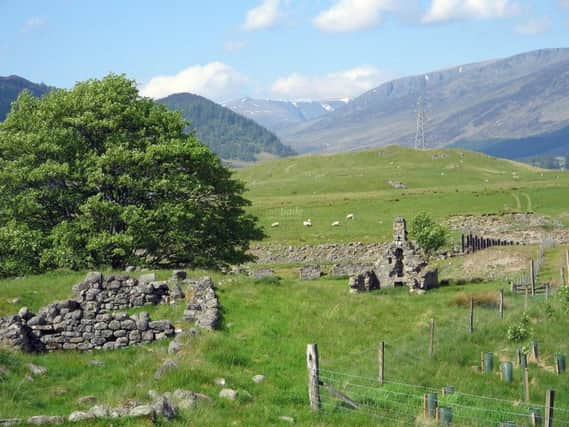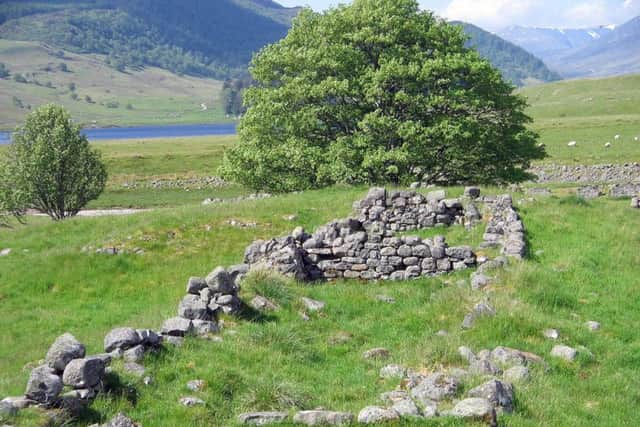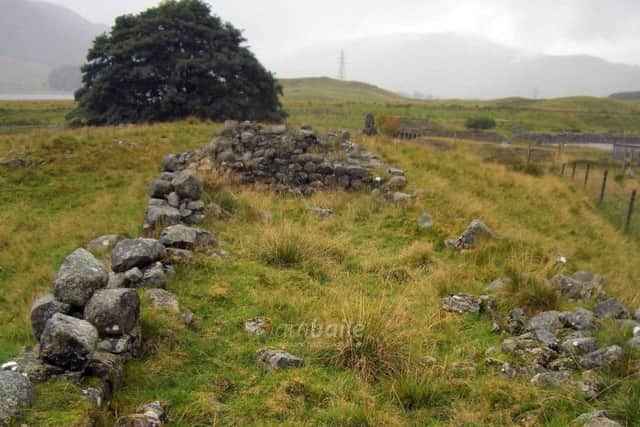Memories of a deserted Highland township and the last people to call it home


Crathie in Badenoch was deserted around 60 years ago, with crumbling walls, the outlines of crofts and the remains of a chapel all that can be found.
It was once home to 30 families but was largely deserted int he late 19th Century when smallholders were cleared from the land. More buildings were evacuated in the 1920s following the losses of the Great War. In the early 1960s, the last resident died with a way of life leaving with him.
Advertisement
Hide AdAdvertisement
Hide AdBy then, the land was owned by Sir William Ramsden the Yorkshire Baronet whose family once owned the town of Huddersfield and who bought up swathes of the Highlands in the mid-20th Century to pursue his interest in forestry.


Rosie Campbell, a native of nearby Laggan, used to spend her childhood summers in Crathie, which sits at the entrance to Glen Markie.
In a recording held by the Am Baile archive, which is run by Highlife Highland, she spoke of how life at Crathie changed through time.


The last croft at Crathie was lived in by an Alan MacGregor. When he died, the last croft in Crathie went with him, according to the account.
By this time, the MacGregors, the MacDougalls and the MacFarlanes had all gone.
Crathie was one of the last Badenoch townships to be abandoned in the 20th century. Gaelic was mainly spoken here although not everyone knew the language, particularly those who had moved into Crathie from Aberdeenshire or Moray. One woman moved to Crathie from Glasgow.
Everyone also knew English on some level, Ms Campbell recalled.
On the attitude towards Gaelic by the 'incomers', she added: "I don't think they objected to the language. You never heard much about it in these days because that was a time when we weren't allowed to speak it in school, you see. That was the time when it really got lost. It was at that period we weren't allowed, the teachers weren't allowed to let us have Gaelic."
Advertisement
Hide AdAdvertisement
Hide AdA great "neighbourliness" existed in Crathie, which had a mix of Catholics and Protestants, particularly when it came to completing the big jobs like peat cutting.
"There was a great neighbourliness among them all; they all helped each other. If you were behind with your crop, the others helped. They were very good neighbours. Helped each other that way. If they were doing things they were always very neighbourly at doing anything . You never heard of them falling out about them, you know, like that. They were always very neighbourly, as far as I can always remember in Crathie, very neighbourly," Ms Campbell said.
Washday in the township was another great communal effort when residents lit fires to warm the water to fill the giant wooden tubs that were made from half barrels.
Villagers would get in the barrels and stamp their laundry clean with the feet, according to the account.
"Fires would be built near their stupa so they hadn't to carry their water far. It was always lovely weather at that time too," Ms Campbell said.
For breakfast, it was always porridge that was served with one resident, Charlie Ogg, always taking honey with his and eating it with a horn spoon. Sometimes cream would be poured on top of the oats. Ms Campbell collected the milk form one of the crofts every morning in a "wee cream pail." On Sunday, boiled eggs were offered with scones, pancakes and oatcakes also offered.
Villagers were remembered as well fed. Crofters could kill a sheep if they wanted one and Sir John, the landowner, was remembered for giving out venison to his tenants. Rabbits and hares also made it to the pot,with pieces of salt herring brought home from a nearby shop in a bucket.
Butter was also made by residents and crowdie, a curd cheese, was salted and kept for the winter.
Today, the remains of around 61 buildings can be found where Crathie once stood, as well as the last remnants of around 25 enclosures and a corn-drying kiln.
